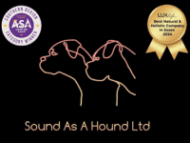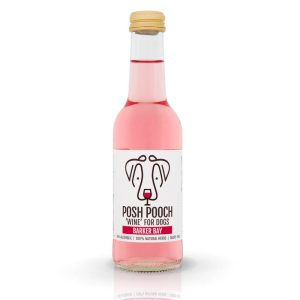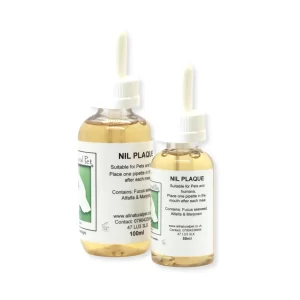Animals have selected green clay when suffering from the following:
Neutralises plant toxins – skin irritation or ingested
Bacterial and fungal/yeast infections
Colic (due to toxins)
Ectoparasites
Wounds (dries and protects – apply dry powder to the wound)
How to use: All species
Topical – cover wounds or broken skin with generous amounts of dry clay. Re-apply when it has absorbed. Both red and green clay have antibacterial properties; they protect the wound from flies and other matter, helping to keep it clean while drawing out toxins
Abscesses – make a poultice using water and clay to enhance its drawing properties
Oral – clay may be licked as a dry powder or with water added. Offer both to see which is preferred
When working with clay products use plastic or wooden utensils, rather than metal.
Does your dog just love rolling around in the mud? Why not whip up a batch of “mud” that’ll help your dog heal? I’m talking about healing clay for dogs!
Clays is known for it’s many therapeutic healing purposes. Whether white, yellow, brown, green or red in color, all clays have one thing in common … mud. Potent mud.
Humans and animals have been using healing clays as a type of self-care since before history started being recorded. The best thing? It’s easy to reap the benefits of clay to heal and care for yourself and your dog.
How Does Clay Work?
Clay works with the body to correct imbalances through the methods of absorption and adsorption. A clay’s absorption rate is how fast the clay reaches saturation. Its adsorption rate is how well it holds onto or binds with organic and inorganic substances.
These processes vary among different types of clays. The beauty of clay is that chemically, it’s a negatively charged substance. Most toxins are positively charged, so this polarity makes clay irresistible to viruses, harmful bacteria, parasites, gases and various other substances.
What’s most amazing is that clay does this all without harmful side effects …
Illite
Illite is a fine particle, non-expansive green clay known to seek out undesirable microbes and ailing tissues. Rich in sea minerals, it helps support the body’s own healing mechanisms by having the highest adsorption rate. This gives illite the ability to act as a magnet for toxins. It is by far the best choice for detoxification purposes.
How To Use Healing Clay For Dogs
When you look at the different types of healing clays, you can’t help but notice that each clay is unique in its structure and how it reacts to the body.
Clay also has a wide range of colors, such as red, brown, green, white and blue. White and green clays are used internally and externally, while brown, red, yellow and blue clays are used only externally. What I love about healing clays is that they can be used with other forms of treatment.
Here are a few guidelines for safe and effective use:
- Never let clay come in contact with metal. Use glass or wooden utensils. Store your clay in glass containers so it will remain sterile and safe for first-aid use.
- Use pure filtered or spring water.
- Treat one issue at a time (this is important).
- Don’t feed your dog for at least two hours after an internal clay treatment.
- Wait at least two hours after your dog ingests clay to give any medications or herbs.
- Clay can be used daily until your dog is healed. If clay treatment doesn’t improve your dog’s condition, discontinue use.
-
How To Make A Clay Poultice
Poultices are little masses of material, in this case clay, wrapped in clean cotton or muslin.
Ingredients
- 1 lb pure green clay
- 1⁄2 cup cool spring or purified water
- Unbleached cotton or muslin
- Mix clay with enough water to make a thick paste
- Spread a layer of paste with a wooden spoon on to the center of the muslin, about one inch deep and approximately two inches bigger than the area to be treated
- Apply the poultice clay side down and leave it alone until the clay pulls away from the skin. This indicates that the treatment is finished
- Repeat daily until healed
Poultices can be used for cuts, insect bites and stings, bacterial infections of the skin and wounds that won’t heal.
-
Dry Topical Application Of Clay
Dry application can be used as a disinfectant in treating wounds. Clay can immediately stop bleeding wounds and prevent scab formation. This type of application has been successfully used in the treatment of hot spots, stings, bites, and severe itching.
Mix clay powder and water together and make a dry paste. Apply to bleeding wounds and wounds that need to heal without scabbing. This method can help prevent abscesses and keep a healing wound from itching.
-
Care Instructions
Store in a cool, dark, dry environment when not in use. Keep powders in air tight containers and limit exposure to air and moisture, otherwise they may harden.






Susan (verified owner) –
Fantastic product. Great price. Quick shipping and great packaging.
Emma Holmyard (store manager) –
Thank you Susan for taking the time to write this wonderful review. xx
cheryl French (verified owner) –
Amazing product for my bulldogs have recommended it to so many people its like fairy dust..
Excellent
Annemarie B. (verified owner) –
So helpful, can’t recommend staff and products highly enough. Awards after awards being won and all this help and knowledge is passed to helping our pets. Such an honest and lovely lady and business